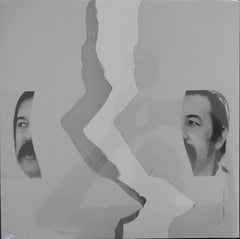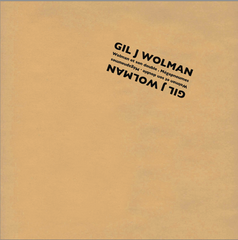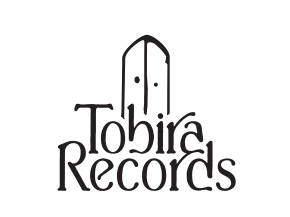クイックビュー
{"id":8846579138810,"title":"Gil J. Wolman \/\/ Mégapneumes + Wolman Et Son Double 2xLP BUNDLE","handle":"gil-j-wolman-megapneumes-wolman-et-son-double-2xlp-bundle","description":"\u003cp\u003eフランスの実験音楽家/美術家Gil J. Wolman (1929-1995)が、2025年6月にイタリアの実験レーベルAlga Marghenからリリースした2枚組レコードです。\u003c\/p\u003e\n\u003cp\u003e 2作のアルバム『Mégapneumes』と『 Wolman Et Son Double』がセットになってお得です。\u003c\/p\u003e\n\u003cp\u003eレコードのみでの発表となります。\u003c\/p\u003e\n\u003cp\u003e\u003ciframe title=\"YouTube video player\" src=\"https:\/\/www.youtube.com\/embed\/ePBL_rsDIVI?si=d2Jdjh65ughbghjm\" height=\"315\" width=\"560\"\u003e\u003c\/iframe\u003e\u003c\/p\u003e\n\u003cp\u003eレーベルその他作品は\u003ca href=\"https:\/\/tobirarecords.com\/collections\/alga-marghen\"\u003eこちら\u003c\/a\u003e \/\/\/ Click \u003ca href=\"https:\/\/tobirarecords.com\/collections\/alga-marghen\"\u003ehere\u003c\/a\u003e to see more Alga Marghen releases available at Tobira. \u003c\/p\u003e\n\u003cp\u003e----------------------------\u003c\/p\u003e\n\u003cp\u003eA special bundled edition of 2 albums by \u003cmeta charset=\"utf-8\"\u003eGil J. Wolman released on Alga Marghen: newly released 'Mégapneumes' (released in an edition of 220 copies) and 'Wolman Et Son Double' (released in an edition of 350). \u003c\/p\u003e\n\u003cp\u003e2 x 12\" black vinyl in separate reverse-board sleeves, presented in large printed envelope. \u003cbr\u003e\u003c\/p\u003e\n\u003cblockquote\u003e\n\u003cp\u003e\u003cstrong\u003eTracklist\u003c\/strong\u003e:\u003c\/p\u003e\n\u003cp\u003eMégapneumes:\u003c\/p\u003e\n\u003cp class=\"MsoNormal\"\u003eA1\u003cspan style=\"mso-tab-count: 2;\"\u003e \u003c\/span\u003eUn Coup Pour Rien\u003cspan style=\"mso-tab-count: 1;\"\u003e \u003c\/span\u003e4:28\u003cbr\u003e\u003cspan style=\"font-family: -apple-system, BlinkMacSystemFont, 'San Francisco', 'Segoe UI', Roboto, 'Helvetica Neue', sans-serif; font-size: 0.875rem;\"\u003eA2\u003c\/span\u003e\u003cspan style=\"mso-tab-count: 2;\"\u003e \u003c\/span\u003e\u003cspan style=\"font-family: -apple-system, BlinkMacSystemFont, 'San Francisco', 'Segoe UI', Roboto, 'Helvetica Neue', sans-serif; font-size: 0.875rem;\"\u003eUn Coup Pour Deux\u003c\/span\u003e\u003cspan style=\"mso-tab-count: 1;\"\u003e \u003c\/span\u003e\u003cspan style=\"font-family: -apple-system, BlinkMacSystemFont, 'San Francisco', 'Segoe UI', Roboto, 'Helvetica Neue', sans-serif; font-size: 0.875rem;\"\u003e4:24\u003cbr\u003e\u003c\/span\u003eA3\u003cspan style=\"mso-tab-count: 2;\"\u003e \u003c\/span\u003eMégapneumes\u003cspan style=\"mso-tab-count: 1;\"\u003e \u003c\/span\u003e14:49\u003cbr\u003eB1\u003cspan style=\"mso-tab-count: 2;\"\u003e \u003c\/span\u003eLes Calles\u003cspan style=\"mso-tab-count: 1;\"\u003e \u003c\/span\u003e3:26\u003cbr\u003eB2\u003cspan style=\"mso-tab-count: 2;\"\u003e \u003c\/span\u003eMégapneume\u003cspan style=\"mso-tab-count: 1;\"\u003e \u003c\/span\u003e3:28\u003cbr\u003eB3\u003cspan style=\"mso-tab-count: 2;\"\u003e \u003c\/span\u003eMégapneumes ( Excerpt )\u003cspan style=\"mso-tab-count: 1;\"\u003e \u003c\/span\u003e13:22\u003cbr\u003eB4\u003cspan style=\"mso-tab-count: 2;\"\u003e \u003c\/span\u003eTu Vas La Taire Ta Gueule\u003cspan style=\"mso-tab-count: 1;\"\u003e \u003c\/span\u003e5:32\u003c\/p\u003e\n\u003cp class=\"MsoNormal\"\u003eWolman Et Son Double:\u003cspan style=\"mso-tab-count: 1;\"\u003e \u003c\/span\u003e\u003c\/p\u003e\n\u003cp class=\"MsoNormal\"\u003eA\u003cspan style=\"mso-tab-count: 2;\"\u003e \u003c\/span\u003ePart I\u003cspan style=\"mso-tab-count: 1;\"\u003e \u003c\/span\u003e15:34\u003cbr\u003eB\u003cspan style=\"mso-tab-count: 2;\"\u003e \u003c\/span\u003ePart II\u003cspan style=\"mso-tab-count: 1;\"\u003e \u003c\/span\u003e15:26\u003c\/p\u003e\n\u003c\/blockquote\u003e\n\u003cp\u003eText by Alga Marghen:\u003c\/p\u003e\n\u003cp\u003eOn Mégapneumes:\u003c\/p\u003e\n\u003cp\u003e\"\u003cmeta charset=\"utf-8\"\u003e\u003cem\u003eThis third Gil J Wolman LP record released by alga marghen, bringing \u003c\/em\u003e\u003cem\u003etogether mégapneumes from the 60s, shed new light into the poetic \u003c\/em\u003e\u003cem\u003erevolution of the time, or a kind of organic infra-language. It’s the \u003c\/em\u003e\u003cem\u003ephysical poetry of a serial killer that we hear recorded in the two \u003c\/em\u003e\u003cem\u003e“Mégapneumes” as well as in the extract from the (last?) “Mégapneumes” \u003c\/em\u003e\u003cem\u003e(excerpt), a tape that was found still wound on Wolman's tape recorder\u003c\/em\u003e\u003cbr\u003e\u003cem\u003eafter the author’s death.\u003c\/em\u003e\u003cbr\u003e\u003cbr\u003e\u003cem\u003e“Les Callas”, an astonishing piece possibly based on several \u003c\/em\u003e\u003cem\u003esuper-imposed recordings of Wolman's voice at Radio Télévision \u003c\/em\u003e\u003cem\u003eFrançaise (ca 1961), features a Lettrist choir recycling Rimbaudian \u003c\/em\u003e\u003cem\u003evowels, while high-pitched screams “à la Artaud” emerge, culminating \u003c\/em\u003e\u003cem\u003ein a polyphony worthy of some primitive tribes resistant to \u003c\/em\u003e\u003cem\u003edomestication.\u003c\/em\u003e\u003cbr\u003e\u003cbr\u003e\u003cem\u003e“Un coup pour rien”, “Un coup pour deux” and “Tu vas la taire ta \u003c\/em\u003e\u003cem\u003egueule”, recorded at Radio Canada in 1965, are presented here for the \u003c\/em\u003e\u003cem\u003efirst time on record, completing the program of this historical and \u003c\/em\u003e\u003cem\u003eradical anthology.\u003c\/em\u003e\u003cbr\u003e\u003cbr\u003e\u003cem\u003eIn a conversation with Ilse Garnier, she told Frederic Aquaviva \u003c\/em\u003e\u003cem\u003e(the curator of this edition for alga marghen) that Henri Chopin had \u003c\/em\u003e\u003cem\u003eprecipitated the end of his attempts at sound poetry with this \u003c\/em\u003e\u003cem\u003edefinitive formula: “Le souffle, c'est moi!”. On the other hand, in \u003c\/em\u003e\u003cem\u003eGil J Wolman's record library, we could find this eloquent dedication \u003c\/em\u003e\u003cem\u003eby Chopin on his record “Audiopoems” LP, released by the English label \u003c\/em\u003e\u003cem\u003eTangent in 1971: “For Gil J Wolman, evident in 1 (because the first), \u003c\/em\u003e\u003cem\u003eevident in 1971, evident in 2071, evident in 3071, in short to the \u003c\/em\u003e\u003cem\u003esup-verbal Gil”.\u003c\/em\u003e\u003cbr\u003e\u003cbr\u003e\u003cem\u003eThe same Chopin in his book “Poésie Sonore Internationale” published \u003c\/em\u003e\u003cem\u003ein 1979, placed Wolman at the very end of the old poetic world: “This \u003c\/em\u003e\u003cem\u003eone - historically - is our hinge, since it goes beyond the phonetic \u003c\/em\u003e\u003cem\u003epoem made of letters. He invented his mégapneumes in 1951, poems in \u003c\/em\u003e\u003cem\u003e‘expectorations’, without verbs or semantics, going from the point of \u003c\/em\u003e\u003cem\u003eview of speech to the negation, and from the point of view of breath \u003c\/em\u003e\u003cem\u003eto the concreteness of the air to be expressed”.\u003c\/em\u003e\u003c\/p\u003e\n\u003cp\u003e\u003cem\u003eBut unlike Isidore Isou, Wolman was not the sort of person to send \u003c\/em\u003e\u003cem\u003eout a leaflet in order to make clear what he had achieved with this \u003c\/em\u003e\u003cem\u003enew poetry, and besides, he himself had consigned Isou to the old \u003c\/em\u003e\u003cem\u003eworld, with the new beginning represented by his mégapneumes, which in \u003c\/em\u003e\u003cem\u003efact date from 1950, when he first joined the Lettrist movement. It is \u003c\/em\u003e\u003cem\u003ealso a misunderstanding of Wolman's work to forget that he was \u003c\/em\u003e\u003cem\u003eundoubtedly one of the first poets to use the resources of the tape \u003c\/em\u003e\u003cem\u003erecorder and its vari-speed, for example in “L'Anticoncept” in 1951, \u003c\/em\u003e\u003cem\u003eor a decade before Brion Gysin with “I Am that I Am” and Henri Chopin.\u003c\/em\u003e\u003cbr\u003e\u003cem\u003e\u003c\/em\u003e\u003c\/p\u003e\n\u003cp\u003e\u003cem\u003eWolman is an essential innovator and artist: a poet, writer, \u003c\/em\u003e\u003cem\u003evisual artist, film-maker and video-maker who, like Gherasim Luca, did \u003c\/em\u003e\u003cem\u003enot need to give numerous public recitals or recordings to make his \u003c\/em\u003e\u003cem\u003emark.\u003c\/em\u003e\u003cbr\u003e\u003cbr\u003e\u003cem\u003eTo be Duchamp or Arman: Wolman chose his side!\"\u003c\/em\u003e\u003c\/p\u003e\n\u003cp\u003e++\u003c\/p\u003e\n\u003cp\u003eOn Wolman Et Son Double:\u003c\/p\u003e\n\u003cp\u003e\u003cmeta charset=\"utf-8\"\u003e\u003cem\u003e\"Might it be as a ‘détournement’ of Artaud’s famous collection and \u003c\/em\u003e\u003cem\u003emasterpiece “Le theâtre et son double” that Gil J Wolman calls this \u003c\/em\u003e\u003cem\u003erecording “Wolman et son double”? Artaud’s conference at the Vieux \u003c\/em\u003e\u003cem\u003eColombier theater on January 13, 1947 had a major impact on the future \u003c\/em\u003e\u003cem\u003esound poets François Dufrêne, Jean-Louis Brau and Gil J Wolman. \u003c\/em\u003e\u003cem\u003eWolman’s ‘mégapneumie’ appeared as early as 1950 and eventually \u003c\/em\u003e\u003cem\u003edeveloped into an improvisation for breath and organic sounds \u003c\/em\u003e\u003cem\u003eoriginating from the throat. The whole body seems to be mobilized to \u003c\/em\u003e\u003cem\u003eperturb the human appearance of any possible speech.\u003c\/em\u003e\u003cbr\u003e\u003cbr\u003e\u003cem\u003e“Wolman et son double”, a previously unreleased recording probably \u003c\/em\u003e\u003cem\u003efrom the end of the 70’s, is Wolman’s most theatrical, musical and \u003c\/em\u003e\u003cem\u003elyrical piece, his most accomplished and extreme. This is due both to \u003c\/em\u003e\u003cem\u003eits duration and above all to its experimental recording techniques: \u003c\/em\u003e\u003cem\u003eWolman records a series of improvisations on a 30 minute track, then \u003c\/em\u003e\u003cem\u003emixes them with a new series of ‘mégapneumes’, mixing and \u003c\/em\u003e\u003cem\u003emanipulations with echo and Larsen!\u003c\/em\u003e\u003cbr\u003e\u003cbr\u003e\u003cem\u003eThe first track begins with a hum, immediately overlaid by \u003c\/em\u003e\u003cem\u003eWolman’s ‘poésie physique’: hoarseness, cough, strangulation, \u003c\/em\u003e\u003cem\u003etwisting, wheeze, rumbling, hiccups, asphyxia, a whole set of grips \u003c\/em\u003e\u003cem\u003eagainst himself and his speech. Wolman breaths and winces, he mimes \u003c\/em\u003e\u003cem\u003ethe impacts, the scars of the blows by an invisible fighter… actually \u003c\/em\u003e\u003cem\u003ehis double.\u003c\/em\u003e\u003cbr\u003e\u003cbr\u003e\u003cem\u003eAntonin Artaud observed that ‘actors in France no longer know how \u003c\/em\u003e\u003cem\u003eto do anything but talk’… “Wolman et son double” may well be the \u003c\/em\u003e\u003cem\u003enational strike of that show, of masterpiece art.\"\u003c\/em\u003e\u003c\/p\u003e\n\u003cp\u003eArtist : Gil J. Wolman\u003c\/p\u003e\n\u003cp\u003eLabel : Alga Marghen\u003c\/p\u003e\n\u003cp\u003ecat no : \u003cmeta charset=\"utf-8\"\u003e\u003cspan\u003eplana-W 34VocSon180, plana-W 26VocSon091\u003c\/span\u003e\u003c\/p\u003e","published_at":"2025-06-30T20:15:29+09:00","created_at":"2025-06-30T11:10:54+09:00","vendor":"Tobira Records","type":"","tags":["Alga Marghen","lp","monooto","new","sound poetry"],"price":738000,"price_min":738000,"price_max":738000,"available":true,"price_varies":false,"compare_at_price":null,"compare_at_price_min":0,"compare_at_price_max":0,"compare_at_price_varies":false,"variants":[{"id":47461805719802,"title":"Default Title","option1":"Default Title","option2":null,"option3":null,"sku":"","requires_shipping":true,"taxable":true,"featured_image":null,"available":true,"name":"Gil J. Wolman \/\/ Mégapneumes + Wolman Et Son Double 2xLP BUNDLE","public_title":null,"options":["Default Title"],"price":738000,"weight":730,"compare_at_price":null,"inventory_management":"shopify","barcode":"","requires_selling_plan":false,"selling_plan_allocations":[]}],"images":["\/\/tobirarecords.com\/cdn\/shop\/files\/ScreenShot2025-06-30at11.07.11am_90dd6c83-9d2d-488d-8f9a-f2e2d3663942.png?v=1751249277","\/\/tobirarecords.com\/cdn\/shop\/files\/meg1_0dc89bff-35b9-4019-9128-0748e3f578f8.jpg?v=1751249277","\/\/tobirarecords.com\/cdn\/shop\/files\/meg2_7a2e1b7f-fef3-4543-b488-e07436300866.jpg?v=1751249277","\/\/tobirarecords.com\/cdn\/shop\/files\/091sleeve_616c6b77-e936-4ba8-921f-7f8f423c3120.jpg?v=1751249278","\/\/tobirarecords.com\/cdn\/shop\/files\/wol_8bd8e0af-6729-4b70-be74-dcdfacd7b31d.jpg?v=1751249277"],"featured_image":"\/\/tobirarecords.com\/cdn\/shop\/files\/ScreenShot2025-06-30at11.07.11am_90dd6c83-9d2d-488d-8f9a-f2e2d3663942.png?v=1751249277","options":["Title"],"media":[{"alt":null,"id":36295067730170,"position":1,"preview_image":{"aspect_ratio":0.994,"height":619,"width":615,"src":"\/\/tobirarecords.com\/cdn\/shop\/files\/ScreenShot2025-06-30at11.07.11am_90dd6c83-9d2d-488d-8f9a-f2e2d3663942.png?v=1751249277"},"aspect_ratio":0.994,"height":619,"media_type":"image","src":"\/\/tobirarecords.com\/cdn\/shop\/files\/ScreenShot2025-06-30at11.07.11am_90dd6c83-9d2d-488d-8f9a-f2e2d3663942.png?v=1751249277","width":615},{"alt":null,"id":36295067664634,"position":2,"preview_image":{"aspect_ratio":1.003,"height":597,"width":599,"src":"\/\/tobirarecords.com\/cdn\/shop\/files\/meg1_0dc89bff-35b9-4019-9128-0748e3f578f8.jpg?v=1751249277"},"aspect_ratio":1.003,"height":597,"media_type":"image","src":"\/\/tobirarecords.com\/cdn\/shop\/files\/meg1_0dc89bff-35b9-4019-9128-0748e3f578f8.jpg?v=1751249277","width":599},{"alt":null,"id":36295067697402,"position":3,"preview_image":{"aspect_ratio":1.002,"height":599,"width":600,"src":"\/\/tobirarecords.com\/cdn\/shop\/files\/meg2_7a2e1b7f-fef3-4543-b488-e07436300866.jpg?v=1751249277"},"aspect_ratio":1.002,"height":599,"media_type":"image","src":"\/\/tobirarecords.com\/cdn\/shop\/files\/meg2_7a2e1b7f-fef3-4543-b488-e07436300866.jpg?v=1751249277","width":600},{"alt":null,"id":36295067631866,"position":4,"preview_image":{"aspect_ratio":1.005,"height":1821,"width":1831,"src":"\/\/tobirarecords.com\/cdn\/shop\/files\/091sleeve_616c6b77-e936-4ba8-921f-7f8f423c3120.jpg?v=1751249278"},"aspect_ratio":1.005,"height":1821,"media_type":"image","src":"\/\/tobirarecords.com\/cdn\/shop\/files\/091sleeve_616c6b77-e936-4ba8-921f-7f8f423c3120.jpg?v=1751249278","width":1831},{"alt":null,"id":36295067762938,"position":5,"preview_image":{"aspect_ratio":1.0,"height":600,"width":600,"src":"\/\/tobirarecords.com\/cdn\/shop\/files\/wol_8bd8e0af-6729-4b70-be74-dcdfacd7b31d.jpg?v=1751249277"},"aspect_ratio":1.0,"height":600,"media_type":"image","src":"\/\/tobirarecords.com\/cdn\/shop\/files\/wol_8bd8e0af-6729-4b70-be74-dcdfacd7b31d.jpg?v=1751249277","width":600}],"requires_selling_plan":false,"selling_plan_groups":[],"content":"\u003cp\u003eフランスの実験音楽家/美術家Gil J. Wolman (1929-1995)が、2025年6月にイタリアの実験レーベルAlga Marghenからリリースした2枚組レコードです。\u003c\/p\u003e\n\u003cp\u003e 2作のアルバム『Mégapneumes』と『 Wolman Et Son Double』がセットになってお得です。\u003c\/p\u003e\n\u003cp\u003eレコードのみでの発表となります。\u003c\/p\u003e\n\u003cp\u003e\u003ciframe title=\"YouTube video player\" src=\"https:\/\/www.youtube.com\/embed\/ePBL_rsDIVI?si=d2Jdjh65ughbghjm\" height=\"315\" width=\"560\"\u003e\u003c\/iframe\u003e\u003c\/p\u003e\n\u003cp\u003eレーベルその他作品は\u003ca href=\"https:\/\/tobirarecords.com\/collections\/alga-marghen\"\u003eこちら\u003c\/a\u003e \/\/\/ Click \u003ca href=\"https:\/\/tobirarecords.com\/collections\/alga-marghen\"\u003ehere\u003c\/a\u003e to see more Alga Marghen releases available at Tobira. \u003c\/p\u003e\n\u003cp\u003e----------------------------\u003c\/p\u003e\n\u003cp\u003eA special bundled edition of 2 albums by \u003cmeta charset=\"utf-8\"\u003eGil J. Wolman released on Alga Marghen: newly released 'Mégapneumes' (released in an edition of 220 copies) and 'Wolman Et Son Double' (released in an edition of 350). \u003c\/p\u003e\n\u003cp\u003e2 x 12\" black vinyl in separate reverse-board sleeves, presented in large printed envelope. \u003cbr\u003e\u003c\/p\u003e\n\u003cblockquote\u003e\n\u003cp\u003e\u003cstrong\u003eTracklist\u003c\/strong\u003e:\u003c\/p\u003e\n\u003cp\u003eMégapneumes:\u003c\/p\u003e\n\u003cp class=\"MsoNormal\"\u003eA1\u003cspan style=\"mso-tab-count: 2;\"\u003e \u003c\/span\u003eUn Coup Pour Rien\u003cspan style=\"mso-tab-count: 1;\"\u003e \u003c\/span\u003e4:28\u003cbr\u003e\u003cspan style=\"font-family: -apple-system, BlinkMacSystemFont, 'San Francisco', 'Segoe UI', Roboto, 'Helvetica Neue', sans-serif; font-size: 0.875rem;\"\u003eA2\u003c\/span\u003e\u003cspan style=\"mso-tab-count: 2;\"\u003e \u003c\/span\u003e\u003cspan style=\"font-family: -apple-system, BlinkMacSystemFont, 'San Francisco', 'Segoe UI', Roboto, 'Helvetica Neue', sans-serif; font-size: 0.875rem;\"\u003eUn Coup Pour Deux\u003c\/span\u003e\u003cspan style=\"mso-tab-count: 1;\"\u003e \u003c\/span\u003e\u003cspan style=\"font-family: -apple-system, BlinkMacSystemFont, 'San Francisco', 'Segoe UI', Roboto, 'Helvetica Neue', sans-serif; font-size: 0.875rem;\"\u003e4:24\u003cbr\u003e\u003c\/span\u003eA3\u003cspan style=\"mso-tab-count: 2;\"\u003e \u003c\/span\u003eMégapneumes\u003cspan style=\"mso-tab-count: 1;\"\u003e \u003c\/span\u003e14:49\u003cbr\u003eB1\u003cspan style=\"mso-tab-count: 2;\"\u003e \u003c\/span\u003eLes Calles\u003cspan style=\"mso-tab-count: 1;\"\u003e \u003c\/span\u003e3:26\u003cbr\u003eB2\u003cspan style=\"mso-tab-count: 2;\"\u003e \u003c\/span\u003eMégapneume\u003cspan style=\"mso-tab-count: 1;\"\u003e \u003c\/span\u003e3:28\u003cbr\u003eB3\u003cspan style=\"mso-tab-count: 2;\"\u003e \u003c\/span\u003eMégapneumes ( Excerpt )\u003cspan style=\"mso-tab-count: 1;\"\u003e \u003c\/span\u003e13:22\u003cbr\u003eB4\u003cspan style=\"mso-tab-count: 2;\"\u003e \u003c\/span\u003eTu Vas La Taire Ta Gueule\u003cspan style=\"mso-tab-count: 1;\"\u003e \u003c\/span\u003e5:32\u003c\/p\u003e\n\u003cp class=\"MsoNormal\"\u003eWolman Et Son Double:\u003cspan style=\"mso-tab-count: 1;\"\u003e \u003c\/span\u003e\u003c\/p\u003e\n\u003cp class=\"MsoNormal\"\u003eA\u003cspan style=\"mso-tab-count: 2;\"\u003e \u003c\/span\u003ePart I\u003cspan style=\"mso-tab-count: 1;\"\u003e \u003c\/span\u003e15:34\u003cbr\u003eB\u003cspan style=\"mso-tab-count: 2;\"\u003e \u003c\/span\u003ePart II\u003cspan style=\"mso-tab-count: 1;\"\u003e \u003c\/span\u003e15:26\u003c\/p\u003e\n\u003c\/blockquote\u003e\n\u003cp\u003eText by Alga Marghen:\u003c\/p\u003e\n\u003cp\u003eOn Mégapneumes:\u003c\/p\u003e\n\u003cp\u003e\"\u003cmeta charset=\"utf-8\"\u003e\u003cem\u003eThis third Gil J Wolman LP record released by alga marghen, bringing \u003c\/em\u003e\u003cem\u003etogether mégapneumes from the 60s, shed new light into the poetic \u003c\/em\u003e\u003cem\u003erevolution of the time, or a kind of organic infra-language. It’s the \u003c\/em\u003e\u003cem\u003ephysical poetry of a serial killer that we hear recorded in the two \u003c\/em\u003e\u003cem\u003e“Mégapneumes” as well as in the extract from the (last?) “Mégapneumes” \u003c\/em\u003e\u003cem\u003e(excerpt), a tape that was found still wound on Wolman's tape recorder\u003c\/em\u003e\u003cbr\u003e\u003cem\u003eafter the author’s death.\u003c\/em\u003e\u003cbr\u003e\u003cbr\u003e\u003cem\u003e“Les Callas”, an astonishing piece possibly based on several \u003c\/em\u003e\u003cem\u003esuper-imposed recordings of Wolman's voice at Radio Télévision \u003c\/em\u003e\u003cem\u003eFrançaise (ca 1961), features a Lettrist choir recycling Rimbaudian \u003c\/em\u003e\u003cem\u003evowels, while high-pitched screams “à la Artaud” emerge, culminating \u003c\/em\u003e\u003cem\u003ein a polyphony worthy of some primitive tribes resistant to \u003c\/em\u003e\u003cem\u003edomestication.\u003c\/em\u003e\u003cbr\u003e\u003cbr\u003e\u003cem\u003e“Un coup pour rien”, “Un coup pour deux” and “Tu vas la taire ta \u003c\/em\u003e\u003cem\u003egueule”, recorded at Radio Canada in 1965, are presented here for the \u003c\/em\u003e\u003cem\u003efirst time on record, completing the program of this historical and \u003c\/em\u003e\u003cem\u003eradical anthology.\u003c\/em\u003e\u003cbr\u003e\u003cbr\u003e\u003cem\u003eIn a conversation with Ilse Garnier, she told Frederic Aquaviva \u003c\/em\u003e\u003cem\u003e(the curator of this edition for alga marghen) that Henri Chopin had \u003c\/em\u003e\u003cem\u003eprecipitated the end of his attempts at sound poetry with this \u003c\/em\u003e\u003cem\u003edefinitive formula: “Le souffle, c'est moi!”. On the other hand, in \u003c\/em\u003e\u003cem\u003eGil J Wolman's record library, we could find this eloquent dedication \u003c\/em\u003e\u003cem\u003eby Chopin on his record “Audiopoems” LP, released by the English label \u003c\/em\u003e\u003cem\u003eTangent in 1971: “For Gil J Wolman, evident in 1 (because the first), \u003c\/em\u003e\u003cem\u003eevident in 1971, evident in 2071, evident in 3071, in short to the \u003c\/em\u003e\u003cem\u003esup-verbal Gil”.\u003c\/em\u003e\u003cbr\u003e\u003cbr\u003e\u003cem\u003eThe same Chopin in his book “Poésie Sonore Internationale” published \u003c\/em\u003e\u003cem\u003ein 1979, placed Wolman at the very end of the old poetic world: “This \u003c\/em\u003e\u003cem\u003eone - historically - is our hinge, since it goes beyond the phonetic \u003c\/em\u003e\u003cem\u003epoem made of letters. He invented his mégapneumes in 1951, poems in \u003c\/em\u003e\u003cem\u003e‘expectorations’, without verbs or semantics, going from the point of \u003c\/em\u003e\u003cem\u003eview of speech to the negation, and from the point of view of breath \u003c\/em\u003e\u003cem\u003eto the concreteness of the air to be expressed”.\u003c\/em\u003e\u003c\/p\u003e\n\u003cp\u003e\u003cem\u003eBut unlike Isidore Isou, Wolman was not the sort of person to send \u003c\/em\u003e\u003cem\u003eout a leaflet in order to make clear what he had achieved with this \u003c\/em\u003e\u003cem\u003enew poetry, and besides, he himself had consigned Isou to the old \u003c\/em\u003e\u003cem\u003eworld, with the new beginning represented by his mégapneumes, which in \u003c\/em\u003e\u003cem\u003efact date from 1950, when he first joined the Lettrist movement. It is \u003c\/em\u003e\u003cem\u003ealso a misunderstanding of Wolman's work to forget that he was \u003c\/em\u003e\u003cem\u003eundoubtedly one of the first poets to use the resources of the tape \u003c\/em\u003e\u003cem\u003erecorder and its vari-speed, for example in “L'Anticoncept” in 1951, \u003c\/em\u003e\u003cem\u003eor a decade before Brion Gysin with “I Am that I Am” and Henri Chopin.\u003c\/em\u003e\u003cbr\u003e\u003cem\u003e\u003c\/em\u003e\u003c\/p\u003e\n\u003cp\u003e\u003cem\u003eWolman is an essential innovator and artist: a poet, writer, \u003c\/em\u003e\u003cem\u003evisual artist, film-maker and video-maker who, like Gherasim Luca, did \u003c\/em\u003e\u003cem\u003enot need to give numerous public recitals or recordings to make his \u003c\/em\u003e\u003cem\u003emark.\u003c\/em\u003e\u003cbr\u003e\u003cbr\u003e\u003cem\u003eTo be Duchamp or Arman: Wolman chose his side!\"\u003c\/em\u003e\u003c\/p\u003e\n\u003cp\u003e++\u003c\/p\u003e\n\u003cp\u003eOn Wolman Et Son Double:\u003c\/p\u003e\n\u003cp\u003e\u003cmeta charset=\"utf-8\"\u003e\u003cem\u003e\"Might it be as a ‘détournement’ of Artaud’s famous collection and \u003c\/em\u003e\u003cem\u003emasterpiece “Le theâtre et son double” that Gil J Wolman calls this \u003c\/em\u003e\u003cem\u003erecording “Wolman et son double”? Artaud’s conference at the Vieux \u003c\/em\u003e\u003cem\u003eColombier theater on January 13, 1947 had a major impact on the future \u003c\/em\u003e\u003cem\u003esound poets François Dufrêne, Jean-Louis Brau and Gil J Wolman. \u003c\/em\u003e\u003cem\u003eWolman’s ‘mégapneumie’ appeared as early as 1950 and eventually \u003c\/em\u003e\u003cem\u003edeveloped into an improvisation for breath and organic sounds \u003c\/em\u003e\u003cem\u003eoriginating from the throat. The whole body seems to be mobilized to \u003c\/em\u003e\u003cem\u003eperturb the human appearance of any possible speech.\u003c\/em\u003e\u003cbr\u003e\u003cbr\u003e\u003cem\u003e“Wolman et son double”, a previously unreleased recording probably \u003c\/em\u003e\u003cem\u003efrom the end of the 70’s, is Wolman’s most theatrical, musical and \u003c\/em\u003e\u003cem\u003elyrical piece, his most accomplished and extreme. This is due both to \u003c\/em\u003e\u003cem\u003eits duration and above all to its experimental recording techniques: \u003c\/em\u003e\u003cem\u003eWolman records a series of improvisations on a 30 minute track, then \u003c\/em\u003e\u003cem\u003emixes them with a new series of ‘mégapneumes’, mixing and \u003c\/em\u003e\u003cem\u003emanipulations with echo and Larsen!\u003c\/em\u003e\u003cbr\u003e\u003cbr\u003e\u003cem\u003eThe first track begins with a hum, immediately overlaid by \u003c\/em\u003e\u003cem\u003eWolman’s ‘poésie physique’: hoarseness, cough, strangulation, \u003c\/em\u003e\u003cem\u003etwisting, wheeze, rumbling, hiccups, asphyxia, a whole set of grips \u003c\/em\u003e\u003cem\u003eagainst himself and his speech. Wolman breaths and winces, he mimes \u003c\/em\u003e\u003cem\u003ethe impacts, the scars of the blows by an invisible fighter… actually \u003c\/em\u003e\u003cem\u003ehis double.\u003c\/em\u003e\u003cbr\u003e\u003cbr\u003e\u003cem\u003eAntonin Artaud observed that ‘actors in France no longer know how \u003c\/em\u003e\u003cem\u003eto do anything but talk’… “Wolman et son double” may well be the \u003c\/em\u003e\u003cem\u003enational strike of that show, of masterpiece art.\"\u003c\/em\u003e\u003c\/p\u003e\n\u003cp\u003eArtist : Gil J. Wolman\u003c\/p\u003e\n\u003cp\u003eLabel : Alga Marghen\u003c\/p\u003e\n\u003cp\u003ecat no : \u003cmeta charset=\"utf-8\"\u003e\u003cspan\u003eplana-W 34VocSon180, plana-W 26VocSon091\u003c\/span\u003e\u003c\/p\u003e"}






